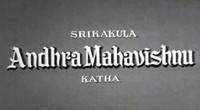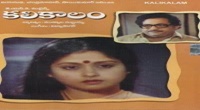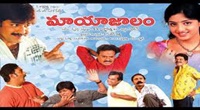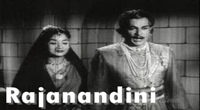
Namaste (/?n??m?ste?/, Devanagari: ??????,
Hindi: (![]() listen)), sometimes spoken as Namaskar, Namaskaram is a respectful form of greeting in Hindu custom, found on the Indian subcontinent mainly in India and Nepal and among the Indian diaspora. Also in other parts of south-east Asia where there is little or no Hindu influence. It is used both for salutation and valediction. Namaste is usually spoken with a slight bow and hands pressed together, palms touching and fingers pointing upwards, thumbs close to the chest. This gesture is called Añjali Mudr? or Pranamasana. Namaste can be spoken without the bow, however, the bow is more formal and is considered to be respectful, especially when directed towards an elder or a person of importance.
listen)), sometimes spoken as Namaskar, Namaskaram is a respectful form of greeting in Hindu custom, found on the Indian subcontinent mainly in India and Nepal and among the Indian diaspora. Also in other parts of south-east Asia where there is little or no Hindu influence. It is used both for salutation and valediction. Namaste is usually spoken with a slight bow and hands pressed together, palms touching and fingers pointing upwards, thumbs close to the chest. This gesture is called Añjali Mudr? or Pranamasana. Namaste can be spoken without the bow, however, the bow is more formal and is considered to be respectful, especially when directed towards an elder or a person of importance.
In Hinduism it means "I bow to the divine in you". The greeting may also be spoken without the gesture or the gesture performed wordlessly, carrying the same meaning.
Contents
Etymology, meaning and origins
Namaste (Namah + te, Devanagari: ??:+ ?? = ??????) is derived from Sanskrit and is a combination of the word namah and the second person dative pronoun in its enclitic form, te. The word nama? takes the Sandhi form namas before the sound t.
Nama? means 'bow', 'obeisance', 'reverential salutation' or 'adoration' and te means 'to you' (singular dative case of 'tvam'). Therefore, Namaste literally means "bowing to you". In Hinduism, it also has a spiritual import reflecting the belief that "the divine and self (atman, soul) is same in you and me", and connotes "I bow to the divine in you".
A less common variant is used in the case of three or more people being addressed namely Namo va? which is a combination of nama? and the enclitic 2nd person plural pronoun va?. The word nama? takes the Sandhi form namo before the sound v.
An even less common variant is used in the case of two people being addressed, namely, Namo v?m, which is a combination of nama? and the enclitic 2nd person dual pronoun v?m.
Representations
Excavations for Indus civilization have revealed many male and female terracotta figures in Namaste posture.[12][13] These archaeological findings are dated to be between 3000 BC to 2000 BC.[14][15]
Uses
The gesture is widely used throughout India, Nepal, Bangladesh, parts of Asia and beyond where people of South and Southeast Asian origins have migrated.[4] Namaste or namaskar is used as a respectful form of greeting, acknowledging and welcoming a relative, guest or stranger.[2] In some contexts, namaste is used by one person to express gratitude for assistance offered or given, and to thank the other person for his or her generous kindness.[16]
Namaskar is also part of the 16 upacharas used inside temples or any place of formal Puja (worship). Namaste in the context of deity worship, scholars conclude,[17][18] has the same function as in greeting a guest or anyone else. It expresses politeness, courtesy, honor, and hospitality from one person to the other. It is used in goodbyes as well. This is sometimes expressed, in ancient Hindu scriptures such as Taittiriya Upanishad, as Atithi Devobhava (literally, may the guest be god).[19][20]
Namaste is one of the six forms of pranama, and in parts of India these terms are used synonymously.[21][22]
Regional variations
In the Hindi and Nepalese speaking populations of South Asia, Namaste (Hindi: [n?m?ste?] ( listen), Devanagari: ??????) and Namask?r are used synonymously. In Nepal, people generally use Namask?ra for greeting and respecting their elders. In Odia namaste is also known as ??????? (namask?r) General greeting[Hello-Namaskar]. In Kannada, Namask?ra (???????) for singular and Namaskaragalu (??????????) is used and sharanu (????) is widely used in karnataka for namaste . In Telugu, Namaste is also known as Dandamu (?????) or namaskaram (????????) for singular and Dandaalu or namaskaralu for plural form. Pranamamu (????????) is also used in formal Telugu. In Bengali, the Namaste gesture is expressed as N?m?shkar (???????), and as Pr?näm (Bengali: ??????) informally. In Assamese, Nômôskar (???????) is used. In Marathi, Namask?r (???????) is used. In Tamil, Namaste is known as Vanakkam (???????) which is derived from the root word vanangu (??????) meaning to bow or to greet. In Malayalam, Namask?ram (????????) is used. The Sinhalese word namask?ra (???????) which derived from Pali also has the same meaning as namask?r/namask?ra in Hindi, Nepali, Odia and Kannada languages, or a different greeting word is ?yub?van (????????) which has the meaning wishing long life.
See also
- Culture of India
- Culture of Nepal
- Añjali Mudr?
- Pran?ma
- Sat Sri Akal
- Gassho
- Sampeah
- Wai



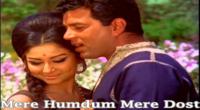

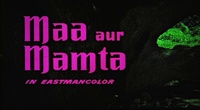
.jpg)


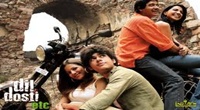






.jpg)
